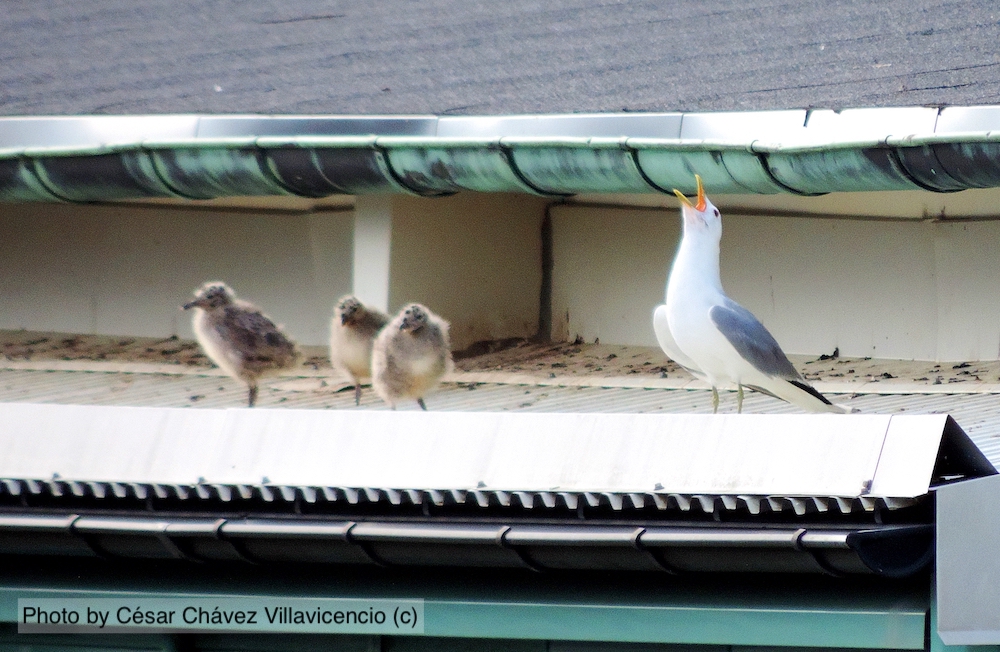Mew Gull Larus canus breeding in a residential area of Malmö, Sweden
DOI:
https://doi.org/10.34080/os.v29.19924Keywords:
animal–human conflict, urban birds, urban breedingAbstract
The Mew Gull Larus canus is both a coastal and inland breeder and can be found on many different substrates, including man-made structures. It is known since long to nest in urban areas of Sweden, but neither the number of urban breeding pairs nor their behaviour have been well documented. We made some observations of breeding Mew Gulls in the city of Malmö in south Sweden and asked the chair of the tenant owners’ association that comprised one of the buildings with Mew Gull nest about the tenants’ experience of the species. Some perceive Mew Gulls as harmful because they dirty the roofs, leave a bad smell, are noisy, and defend their young with aggressive behaviours. Given the often-conflicting interests of gulls and humans, a better documentation of the nesting population in urban areas of Sweden, as well as their behaviour and interaction with people, is called for.
Downloads
References
Belant JL. 1997. Gulls in urban environments: landscape-level management to reduce conflict. Landscape and Urban Planning 38: 245–258. https://doi.org/10.1016/S0169-2046(97)00037-6 DOI: https://doi.org/10.1016/S0169-2046(97)00037-6
Chávez-Villavicencio C. 2014. Approach to breeding site selection of Kelp Gull (Larus dominicanus Lichtenstein 1823) in an urban area from Coquimbo region (Chile) and a new nesting substrate. The Biologist (Lima) 12: 33–44. (In Spanish with English summary.)
Burger J, Gochfeld M, Kirwan GM, Christie DA & Garcia EFJ. 1996. Mew Gull (Larus canus). In: del Hoyo J et al. (eds). Handbook of the Birds of the World, Vol. 3: Hoatzin to Auks. Lynx Edicions, Barcelona.
Green M, Haas F & Lindström Å. 2019. Monitoring population changes of birds in Sweden. Annual report for 2018. Department of Biology, Lund University. 92 pp. (In Swedish with English summary.)
Jones M. 1985. Distribution and activity of Common Gulls and Black-headed Gulls on grassland in Manchester. Bird Study 32: 104–112. https://doi.org/10.1080/00063658509476864 DOI: https://doi.org/10.1080/00063658509476864
Kroc E. 2018. Reproductive ecology of urban-nesting Glaucous-Winged Gulls Larus glaucescens Vancouver, BC, Canada. Marine Ornithology 46: 155–164.
Mitchell PI, Newton SF, Ratcliffe N & Dunn TE. 2004. Seabird Populations of Britain and Ireland: Results of the Seabird 2000 Census (1998–2002). T & AD Poyser, London.
Raven SJ & Coulson JC. 1997. The distribution and abundance of Larus gulls nesting on buildings in Britain and Ireland. Bird Study 44: 13–34. https://doi.org/10.1080/00063659709461035 DOI: https://doi.org/10.1080/00063659709461035
Rock P. 2005. Urban gulls: problems and solutions. British Birds 98: 338–355.
Skórka P, Martyka R, Wójcik JD, Babiarz T & Skórka J. 2006. Habitat and nest site selection in the Common Gull Larus canus in southern Poland: significance of man-made habitats for conservation of an endangered species. Acta Ornithologica 41: 137–144. https://doi.org/10.3161/000164506780143889 DOI: https://doi.org/10.3161/068.041.0111
Snow DW & Perrins CM. 1998. The Birds of the Western Palearctic. Concise Edition. Vol. 1 Non-Passerines. Oxford University Press, Oxford.
Svensson S, Svensson M & Tjernberg M. 1999. Swedish Bird Atlas. Vår Fågelvärld, suppl. 31. Sveriges Ornitologiska Förening, Stockholm. (In Swedish.)

Downloads
Published
How to Cite
Issue
Section
License
Copyright (c) 2019 César Lautaro Chávez-Villavicencio

This work is licensed under a Creative Commons Attribution 4.0 International License.
The copyright of each contribution belongs to the author(s), but all contributions are published under a Creative Commons license, so that anyone is free to share and reuse the contribution as long as the copyright holder is attributed.







